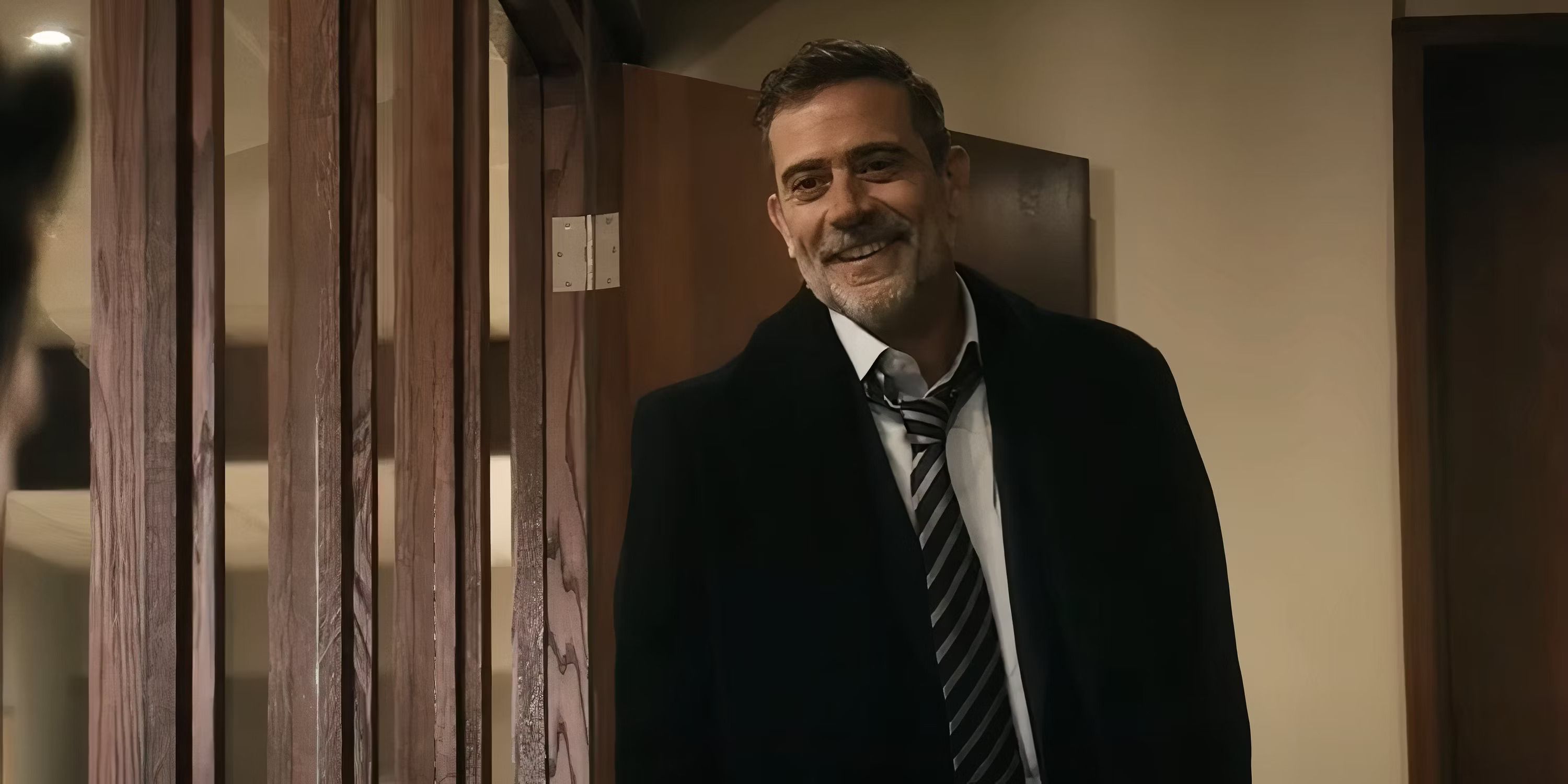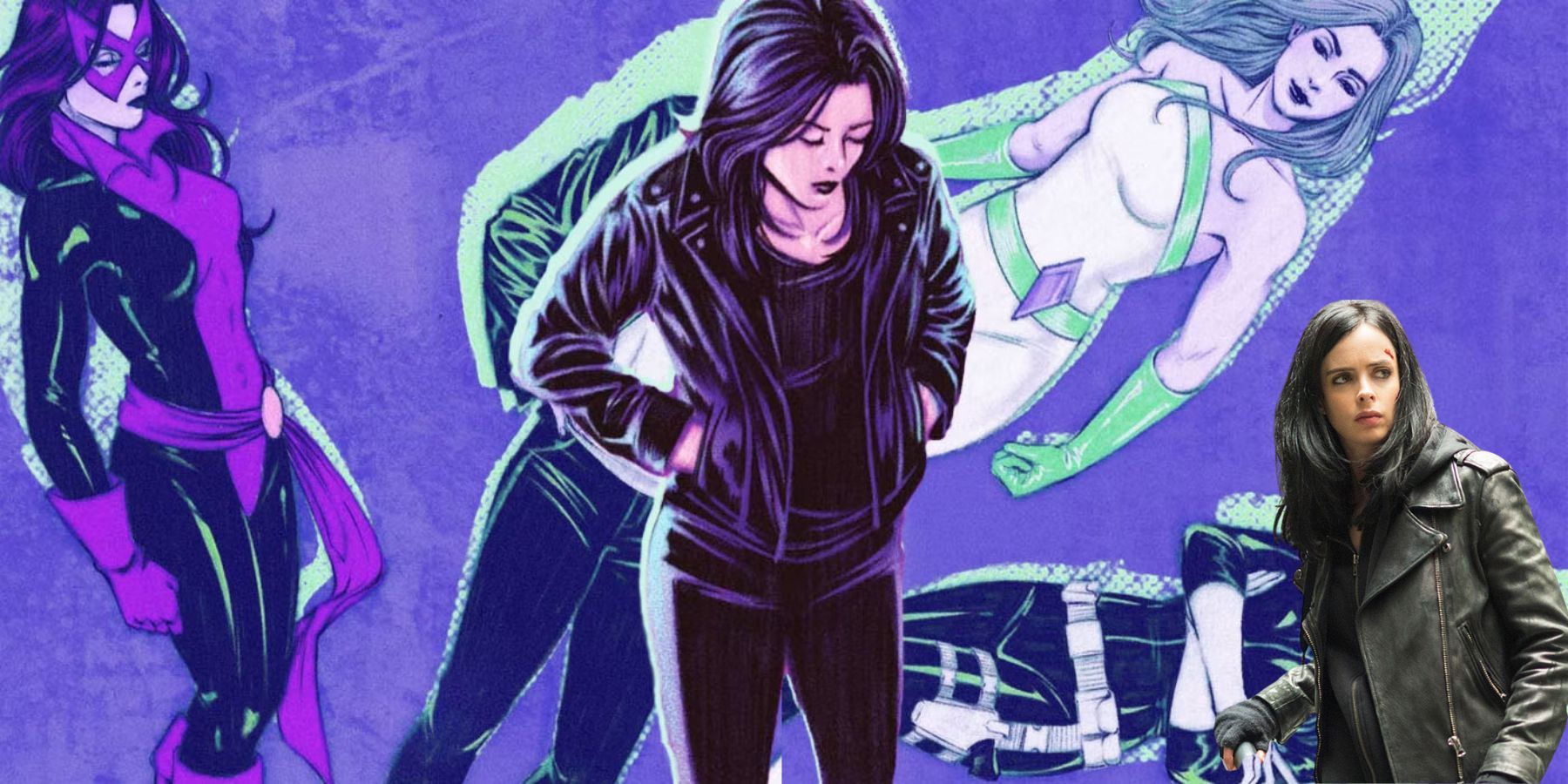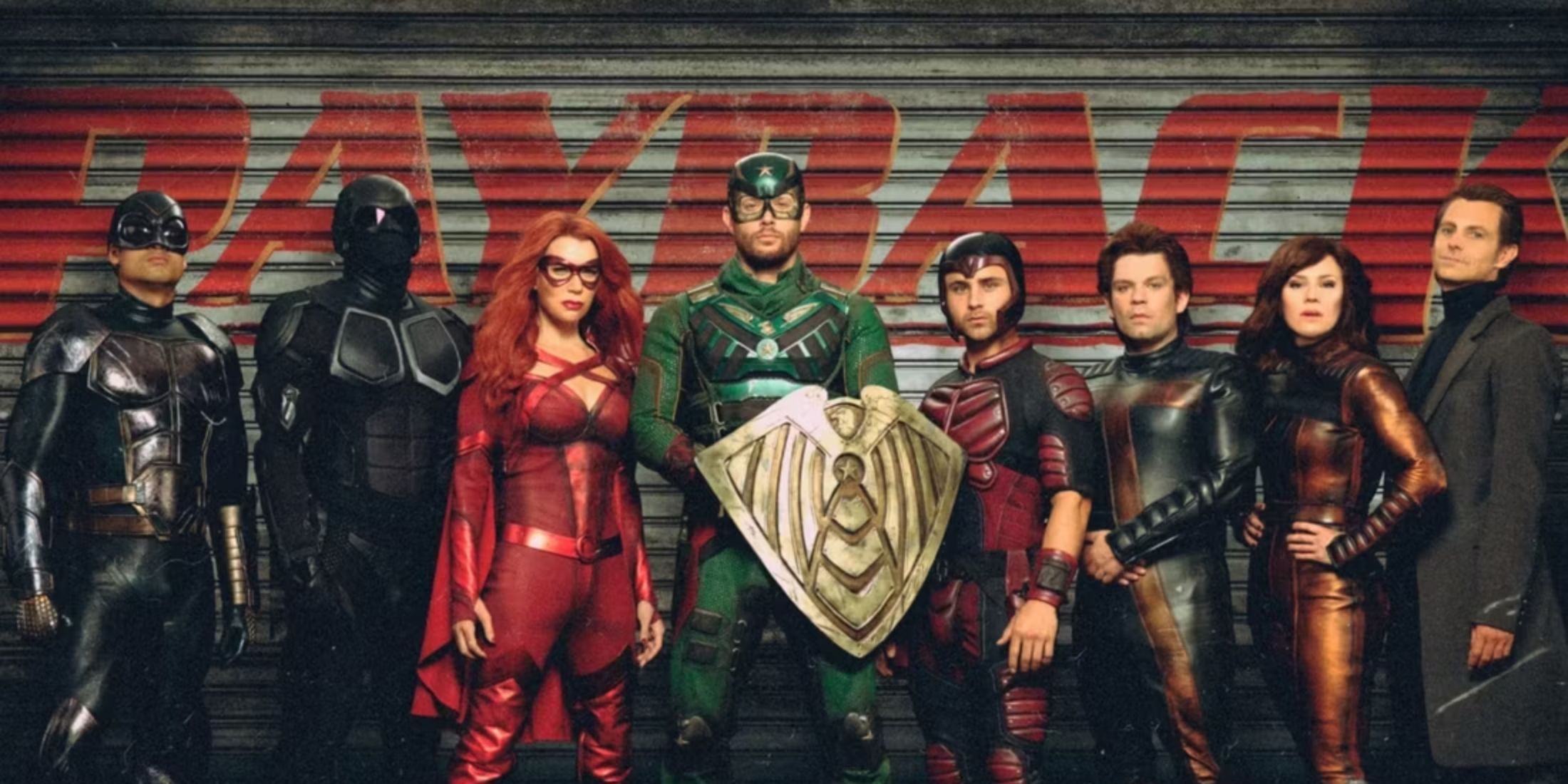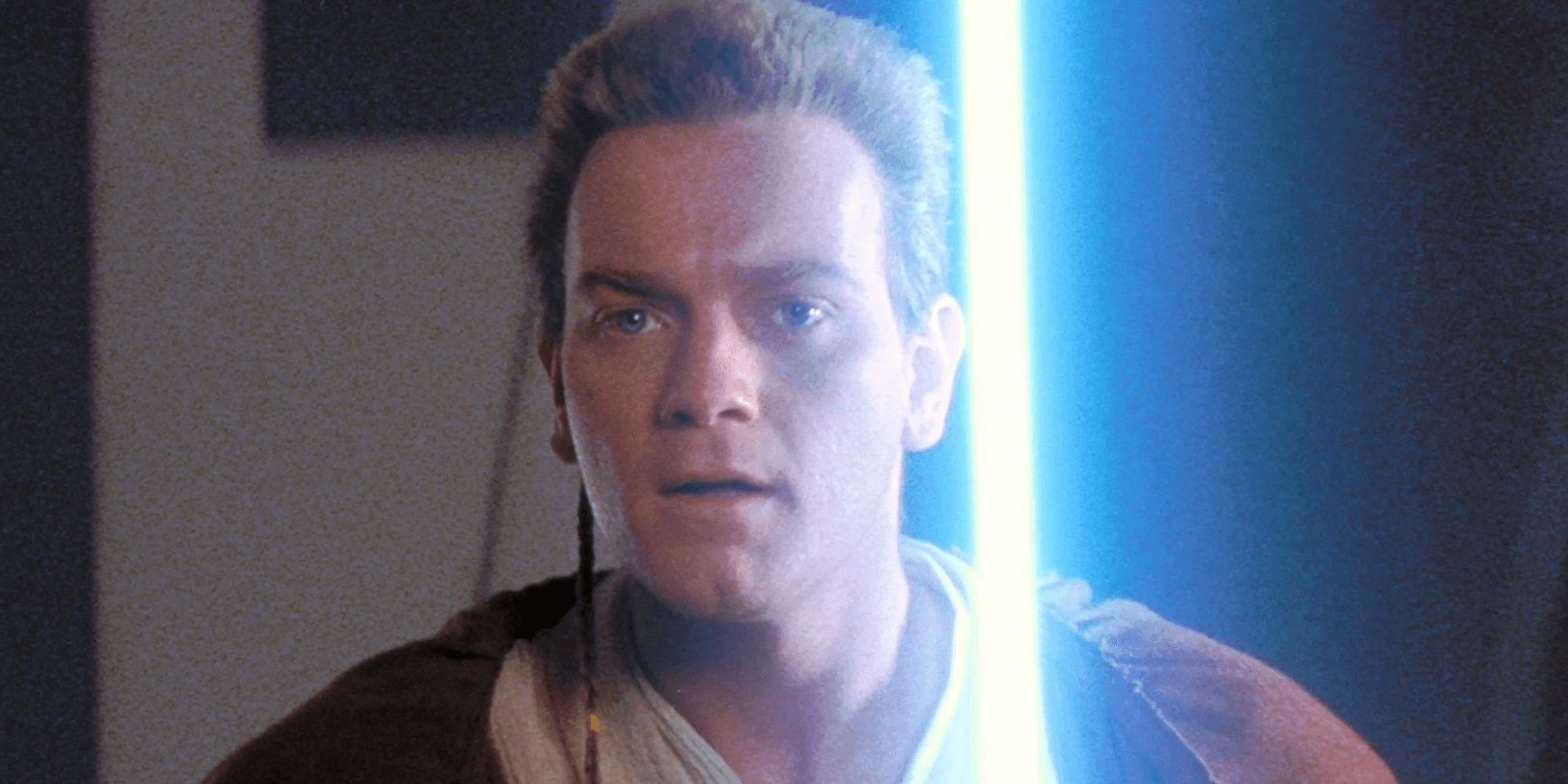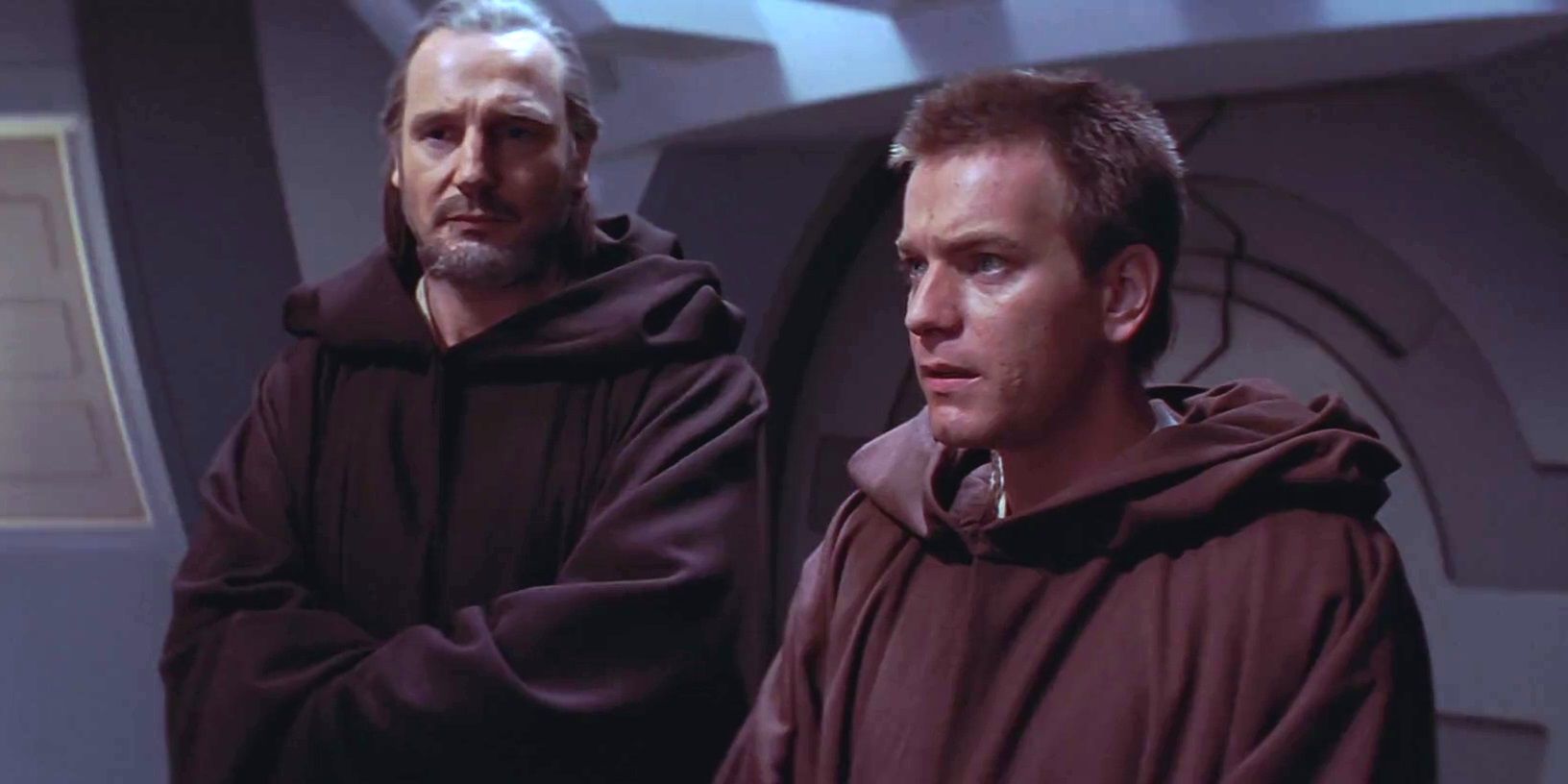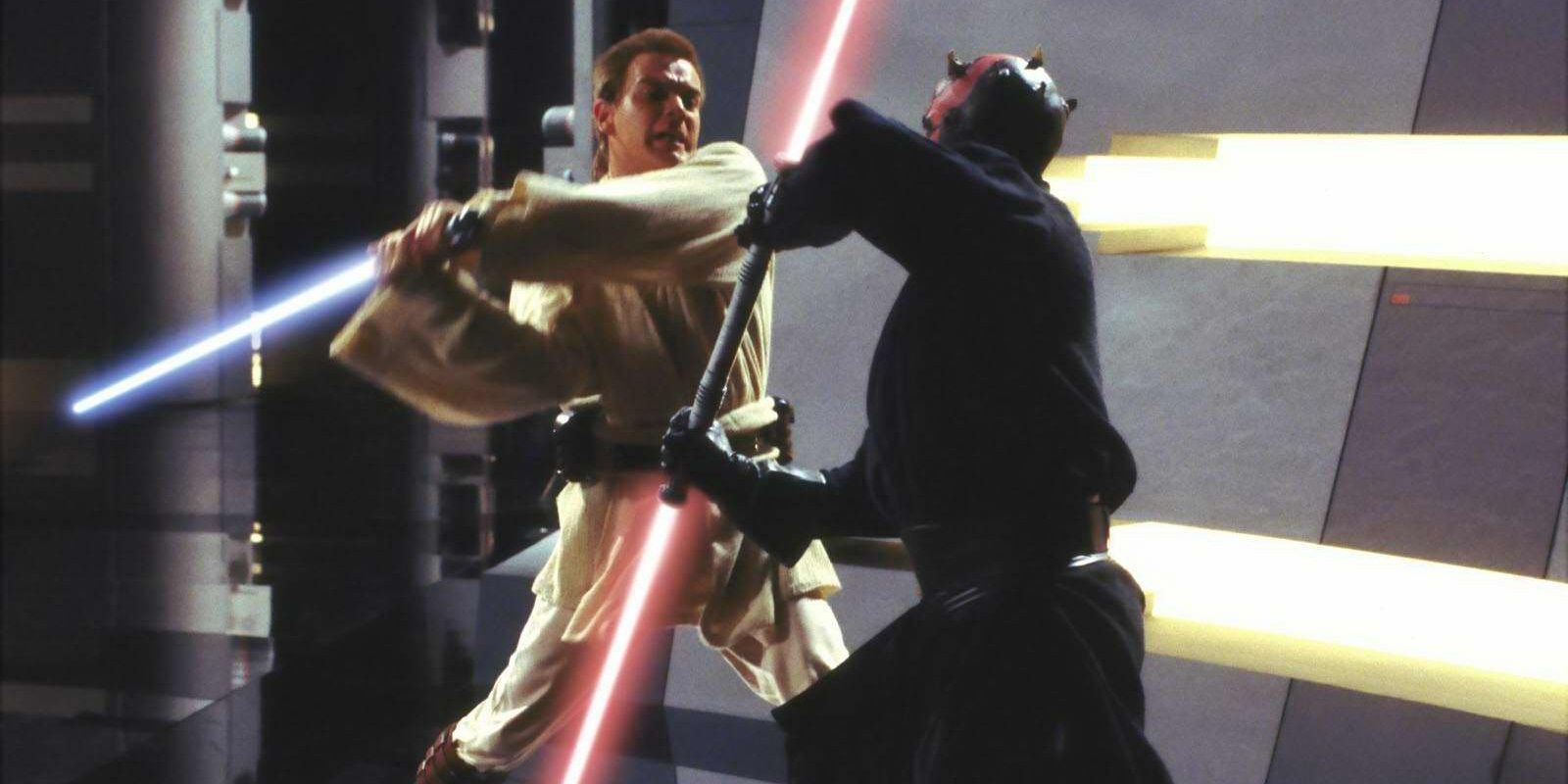The Star Wars saga, by and large, is anchored by the tragedy of Anakin Skywalker. The prequel trilogy acts as a sort of origin story for Darth Vader, chronicling his journey from a promising young Jedi apprentice to the most powerful Sith Lord in the galaxy. The Phantom Menace set the stage for Anakin’s larger prequel arc by introducing him as a nine-year-old Force prodigy that a top-ranking Jedi believes to be the prophesized “chosen one.” But Episode I also acts as a pitch-perfect origin movie for another beloved Star Wars icon: Obi-Wan Kenobi.
Obi-Wan was essentially the Han or Finn of the prequel trilogy. Unlike Anakin and Padmé, Obi-Wan didn’t come from royalty or a significant bloodline. What makes Obi-Wan special is in his actions. At the beginning of The Phantom Menace, he’s a Jedi apprentice like any other who’s showing great promise, but ultimately still has a lot to learn from his master. By the end of the movie, he’s the first Jedi to defeat a Sith Lord in 1,000 years.
In the original trilogy, Alec Guinness gave an unforgettable performance as Obi-Wan Kenobi that made him iconic as the wise old wizard who guides Luke Skywalker on his journey toward confronting Darth Vader and defeating the Empire. In The Phantom Menace, Ewan McGregor didn’t just do an Alec Guinness impression; he brought entirely new dimensions to the character. Where Guinness’ Obi-Wan was old and wise, McGregor’s was young and somewhat naive.
He shared impeccable on-screen chemistry with Liam Neeson’s Qui-Gon. Unlike Anakin, Obi-Wan never questions his master’s wisdom and accepts that he’s still just a student. In many ways, Qui-Gon fills the same role for Obi-Wan in The Phantom Menace that Obi-Wan himself filled for Luke in the original 1977 movie. He’s the lovable older mentor who guides him on his hero’s journey – he’s even killed by a Sith Lord as Obi-Wan watches hopelessly from afar.
His bisection of Darth Maul (with his fallen master’s lightsaber, no less) is one of the most badass acts in the history of the Jedi. When Maul was resurrected with bionic legs in later Star Wars canon, his hero-villain dynamic with Obi-Wan became almost as crucial as his relationship with Vader. Their climactic showdown in Rebels is as poignant as it is thrilling and spectacularly paid off all the setups from The Phantom Menace.
After the climactic lightsaber duel, The Phantom Menace ends with Obi-Wan taking the trials and being granted the rank of master so he can train Anakin, per Qui-Gon’s dying wish. Obi-Wan is the character most inextricably tied to Anakin’s tragedy – arguably even more so than any of the Skywalkers – because he always blamed himself for not preventing his padawan’s turn to the dark side. Ending the movie with Obi-Wan taking on a bright-eyed young Anakin as his apprentice beautifully sets up the dynamic that McGregor would go on to forge with Hayden Christensen in Episodes II and III.
Solo: A Star Wars Story proved how near-impossible it is to successfully pull off an origin story for a beloved Star Wars character. The advantage with Obi-Wan is that the original trilogy charted the end of his life, so there was a lot more ground to cover in a prequel than Han, whose time with the Rebels was already effectively his origin story. Alden Ehrenreich did a brilliant job of playing a familiar Han without stepping on Harrison Ford’s toes, but there was still an inescapable feeling that no one could replace Ford as Han. Ewan McGregor managed to play Obi-Wan with enough connection to Guinness’ take to really feel like his younger self, but enough of his own flair to avoid shallow imitation. To back it up, George Lucas’ script gave Obi-Wan a perfect origin story that complements the beginning of Anakin’s journey and the end of Qui-Gon’s.
After The Phantom Menace chronicled Obi-Wan’s transformation from an ambitious, but inexperienced padawan into a full-blown Jedi destined to go down in the history books, the stage was set for McGregor to really shine as a Kenobi at the height of his powers throughout Episodes II and III. The setups in The Phantom Menace eventually led to scenes like Obi-Wan confronting a killer cyborg that targets Jedi, surrounded by his droid armies, and introducing himself by casually saying, “Hello there.” Anakin’s origin story continues throughout the trilogy and takes a much darker turn than Obi-Wan’s, culminating in the master and padawan’s heartbreaking confrontation on Mustafar.
While The Phantom Menace is primarily an origin story for Darth Vader, or at least the first part of Vader’s origin story, it functions equally well – if not even better, because Anakin’s cutesy portrayal in this movie rubbed a lot of fans the wrong way – as an origin story for Obi-Wan Kenobi.

